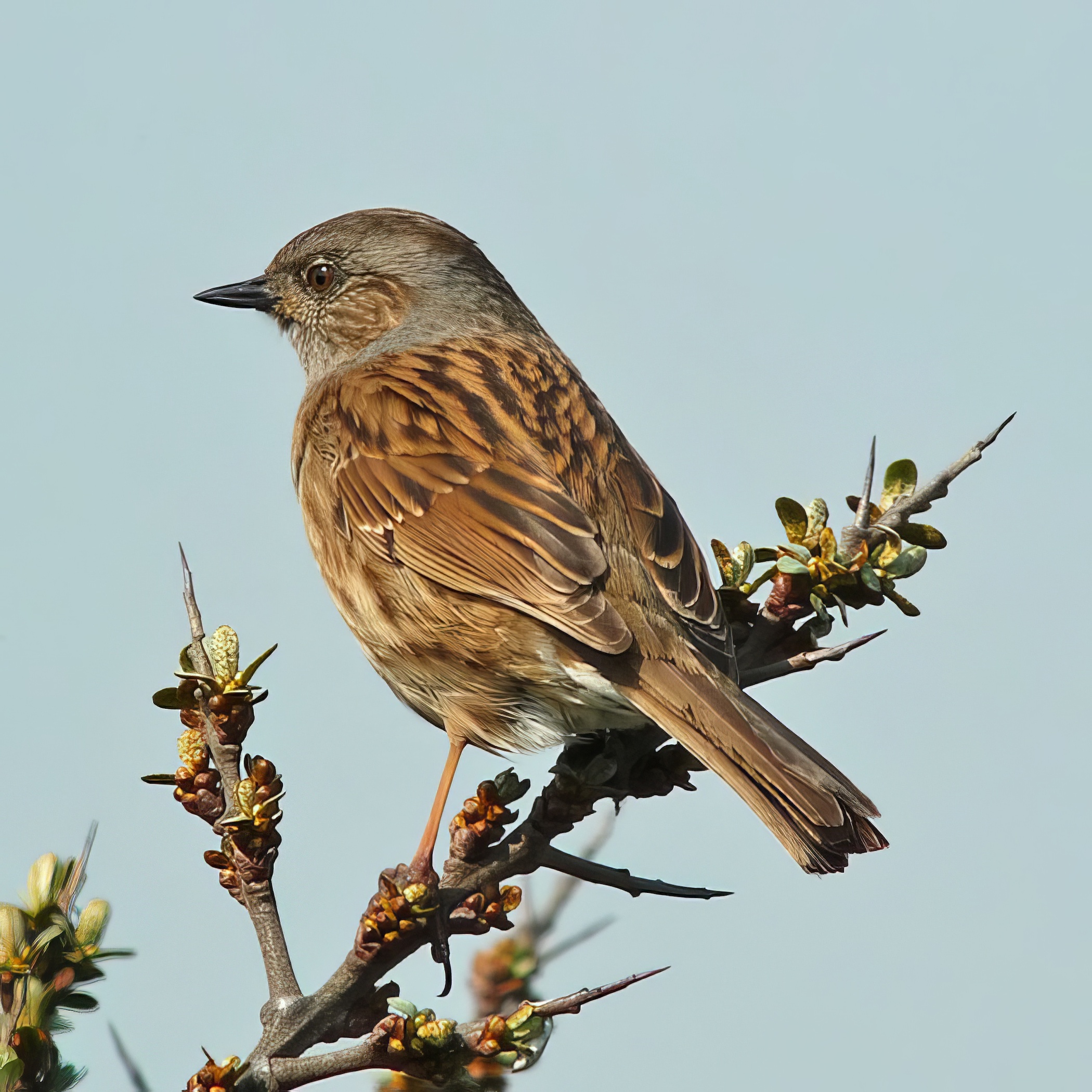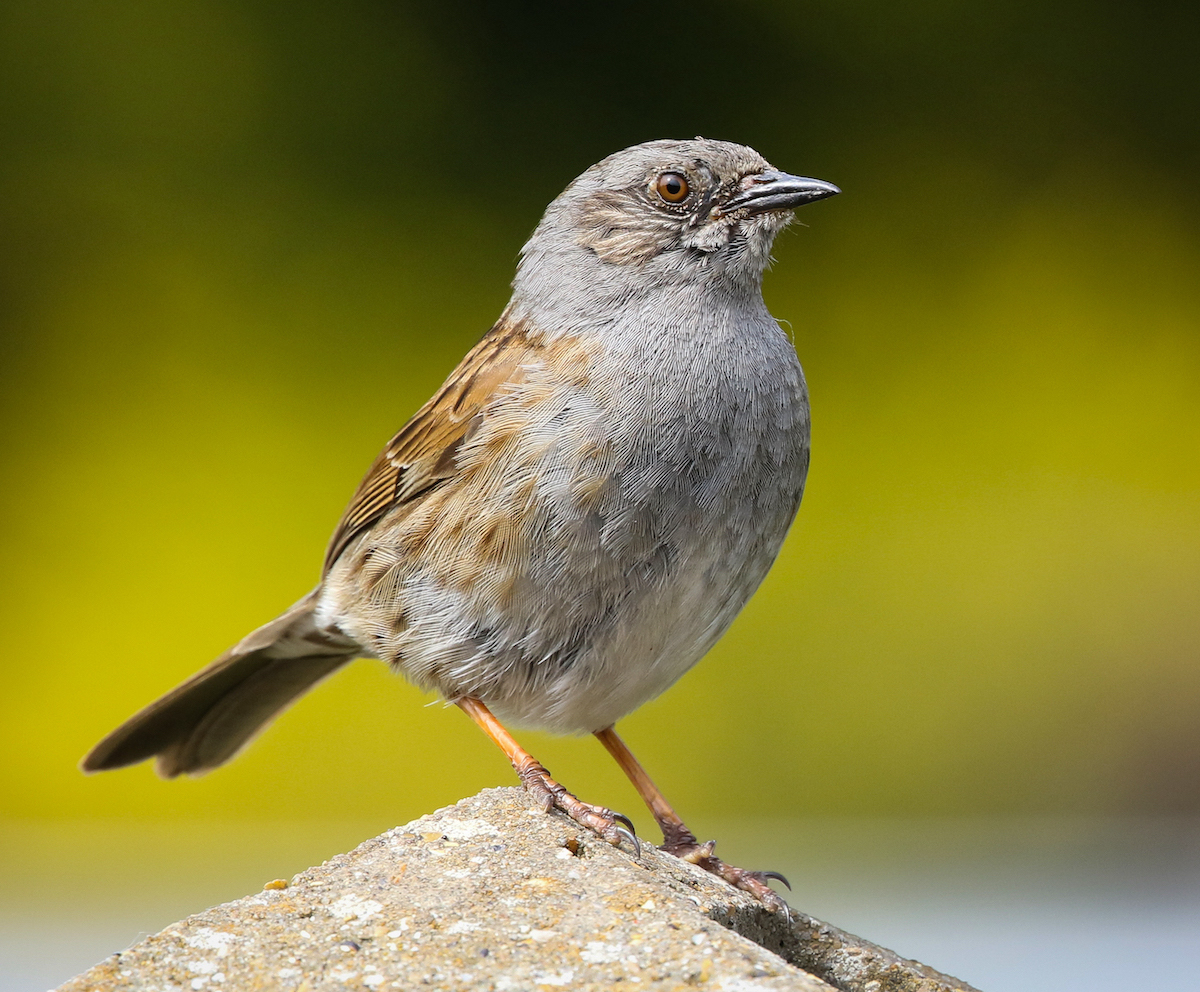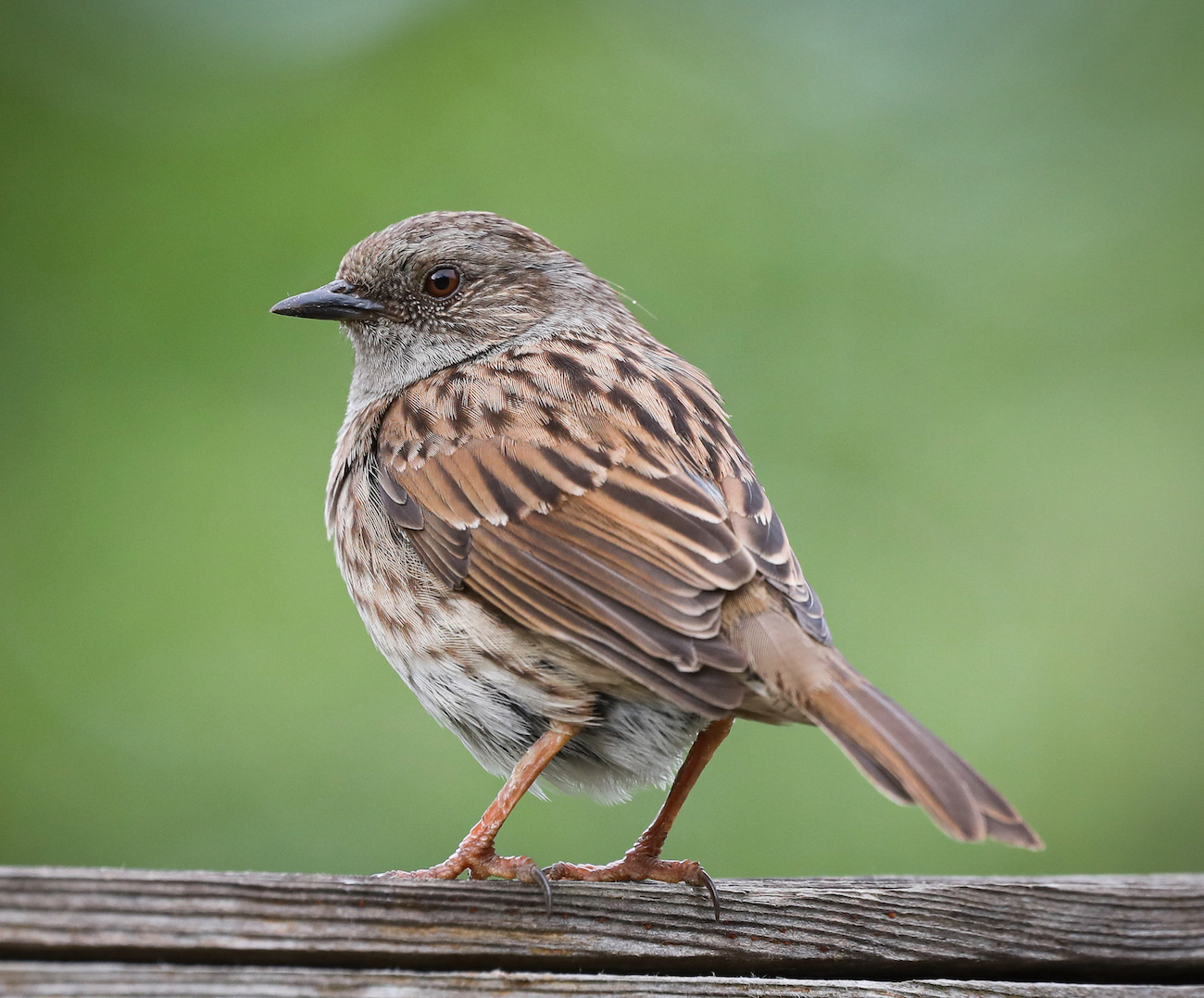Dunnock Prunella modularis
British form occidentalis a very common resident and partial migrant. Nominate continental form a scarce passage migrant, mostly in autumn.



This species is amber listed because the UK population fell by half between the 1970s and 1990s. It has subsequently recovered to some degree. The Atlas estimated the Lincolnshire population at around 100,000 pairs in the late 1980s. BBS data shows that the Lincolnshire breeding population fell by 4% between 1994 and 2018. The BBS incidence change suggests the species has become a little more widespread over the last 10 years.
Ringing evidence shows that the majority of British Dunnocks generally remain within a kilometre of their natal site, but over much of the rest of their European range Dunnocks are partially migratory. Most foreign-ringed birds recovered in the UK originate in Norway and the Low Countries. March-April and October-November are the periods when most continental birds are on the move. Data from Gibraltar Point mirrors these movements. In 2018 the spring peak was 41 on April 7th and the autumn peak was 65 on September 3rd; this was down from 96 there in September 2017. In 2019 the highest count of the year was 121 on March 5th, with an autumn peak of 70 in September. The table below illustrates the potential longevity of these birds, and also one example of a Scandinavian bird trapped in autumn and recovered on breeding grounds in Norway.
| Ring number | Age | Date | Site |
| Y261513 | 1CY | 18/09/2011 | Wyberton |
| 02/06/2012 | Wyberton | ||
| 19/05/2013 | Wyberton | ||
| 09/04/2016 | Wyberton | ||
| 03/01/2019 | Wyberton | ||
| 08/11/2020 | Wyberton | ||
| Age at last re-trapping | 9 yr. 1 mth. | ||
| D629271 | 1CY | 15/10/2013 | North Somercotes |
| Found freshly dead (hit glass) | 2CY/adult | 09/04/2014 | Bodo, Norway |
| Distance travelled | 1,721 km NNE |
(Updated with reference to the new Birds of Lincolnshire (2021) December 2022)
